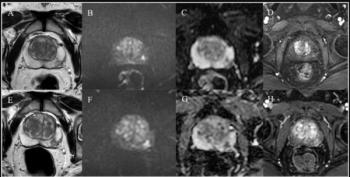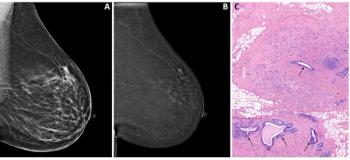
9 Compliance Pitfalls to Avoid
Paying attention to these requirements and regulations can help you avoid Medicare over-payments and any potential suggestions of fraud.
Regulatory compliance in radiology can sometimes be difficult. While you might be aware of the overall areas where you need to pay close attention to the rules, understanding and abiding by all of the ins-and-outs can be burdensome and complicated.
In an Aug. 5 presentation during the Radiology Business Management Association (
But, unlike in years past, you cannot simply gloss over these errors, he said.
“You can no longer simply fix something, sweep it under the rug, and not worry about it. That’s the way it has been for decades,” he said. “Now, the rule is if you see something you’ve done wrong, you need to identify and quantify it, fix it, and re-pay it.”
Now, when over-payments occur, Medicare requires you to document your efforts to identify the payment error and payback the reimbursement within 60 days of becoming aware of the problem. And, they expect you to launch the repayment process no more than six months after you notice the over-payment.
In an effort to help you avoid these repayment issues in the first place, Davis offered guidance in nine areas.
Stark Law
Pay attention to this
To potentially avoid this problem in an imaging center, establish a protocol that does not allow referrals from family members, and require all radiologists in your practice to provide an update on all professional changes for their family members at least annually. Hospital-based radiology groups have two options, he said. Studies can be farmed out to independent contractors or a non-related radiologist in the group can bill for the service in his or her individual name.
Teleradiology
The rules around teleradiology have evolved over time, Davis said. To be compliant, remember that you must be licensed in the state where your patient underwent the technical component of his or her diagnostic procedure, and you cannot bill Medicare for professional services rendered outside of the United States. Also, be careful to bill the correct Medicare-approved contractor for services provided.
Davis also pointed out that the current Medicare practice that allows for the billing of official reads after wet reads have been completed could be changing.
Automated Reads
When you bill for the professional component of services, be sure you provide a full interpretation that fulfills the requirements under Medicare or any other payers, Davis explained.
Radiology Assistants and Radiology Physician Assistants
Radiology assistants (RAs) and radiology physician assistants (RPAs) are not considered to be the same as physicians assistants or nurse practitioners. They are not recognized as Medicare Part B suppliers, he said, and you cannot bill for them the same way as you would the other healthcare professionals.
When analyzing how their services were provided, distinguish between the setting. In a hospital, a radiology group cannot bill for any imaging service an RA or RPA performs as a physician service. If you bill for any role they play as if the supervising physician has performed the task, it creates a compliance problem, he said.
In the office setting, though, Medicare will pay for any non-diagnostic services your RA or RPA provides if they are incident to the physician service. For example, these services must be integral to the physician’s professional services and must commonly be billed without charge or included in the physician’s bill. It also must be a service commonly rendered in a physician’s office and must be completed under direct supervision. It is important to note that it is not necessary for the physician to be in the same room – only in the same suite, Davis explained.
Changing Radiology Reports
Medicare does not allow you to amend, change, or add to any radiology report for the sole purpose of securing a higher reimbursement rate, he said. Doing so could constitute Medicare fraud, exposing you to the False Claims Act that carries penalties or criminal prosecution.
Overall, you should complete medical documentation at the time you see the patient, but Medicare does provide a little wiggle room. If you need to fully complete documentation with information that was not available at the time of care, you can do so shortly after rendering services. But, these instances should be limited and should not be how you normally handle patient medical documentation.
Additional or Different Tests
When performing diagnostic tests or procedures, double-check to be sure all services have been explicitly ordered in writing by the patient’s referring physician and that the order directly points to the basis for the test. Any tests not specifically ordered are not considered reasonable or necessary under Medicare.
Supervising physicians at independent diagnostic testing facilities must also obtain a written order from the treating physician before adding any addition procedures, Davis explained. That includes selecting a more clinically appropriate test, as well as adding a subsequent test if initial results are normal or if more information is needed. Be sure to include the validating reasons for any additional tests in your written report.
Supervision of the Technical Component
For Medicare-approved contractors, the supervising provider must be a physician and most likely must be a radiologist, Davis said. Physician assistants and nurse practitioners cannot be supervising providers.
Electronic Signatures and Orders
All electronic orders must indicate that they have been electronically signed by a specific provider. Without that disclaimer, the order is not valid.
And, although this is not required, Davis recommended that imaging centers keep a signature log if they receive unrecognizable or illegible signatures.
Provider Transaction Access Number
Radiologists must provide their provider transaction access number (PTAN) for any services they render. A non-radiologist imaging center owner cannot use his or her PTAN to bill for professional services.
Read more of Diagnostic Imaging’s RBMA coverage
Newsletter
Stay at the forefront of radiology with the Diagnostic Imaging newsletter, delivering the latest news, clinical insights, and imaging advancements for today’s radiologists.






























